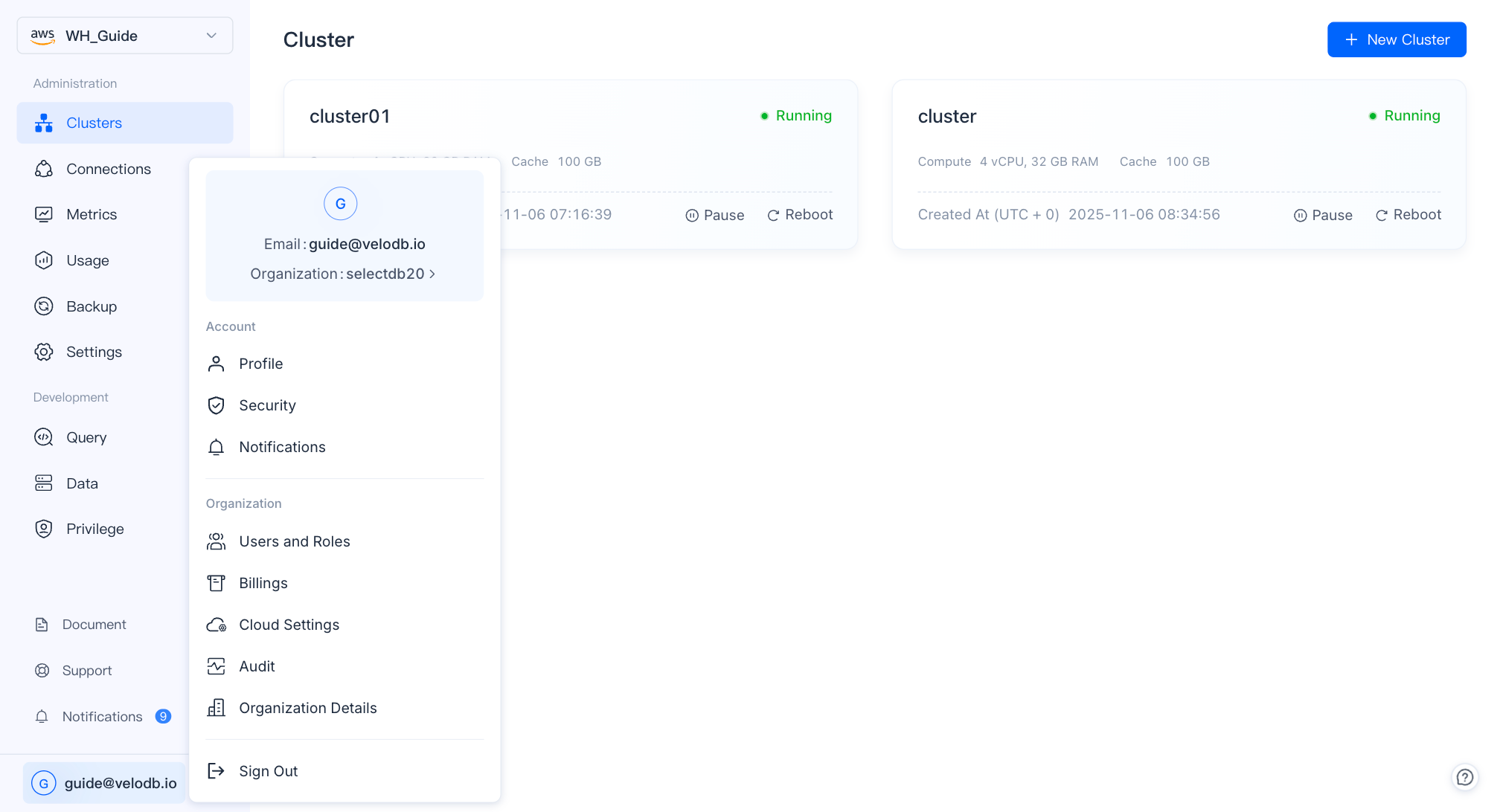Overview
VeloDB Cloud is a cloud-native data warehouse that runs on multiple clouds, providing a consistent user experience and fully managed service. It is extremely fast, cost-effective, single-unified, and easy to use.
This topic gives a brief overview of the main features the VeloDB Cloud console includes and how to navigate it. Later topics provide detailed descriptions of the specific features.
Main Features
-
Registration and Login.
-
Warehouse Management: Provides free trial, paid warehouse creation, warehouse list, etc.
-
Cluster Management: Provides one-click creation, elastic resizing, fast upgrade, deletion, etc.
-
Connections: Provides the connection methods of the warehouses in the private network (VPC) and the public network. The public network connection supports whitelists.
-
Metrics: Provides metrics in dimensions such as resource usage, query, and write and supports flexible and easy-to-use alarm capability.
-
Billing Center: Provides usage statistics for the internal parts of organizations and warehouses. Billing is based on usage statistics.
-
Others: Including organization management, access control, notification, etc.
Navigate VeloDB Cloud
The overall layout of VeloDB Cloud console web interface is as follows:

Navigation Bar
Located on the left side of the web interface, Navigation Bar provides the main features of VeloDB Cloud's most crucial concept, Warehouse, including cluster management, connections, query, metrics, usage statistics, etc.
Warehouse Selector
Located at the top of the left navigation bar,Warehouse Selector displays all the warehouses under the current organization. You can switch warehouses, view warehouse info, create a new warehouse, etc.
After switching to a warehouse, you can use it to experience all the features in the left navigation bar.

User Menu
Located at the bottom of the left navigation bar, User Menu provides some management features related to users and organizations, including security, notifications, users and roles, billings, etc.
